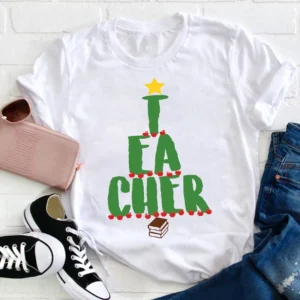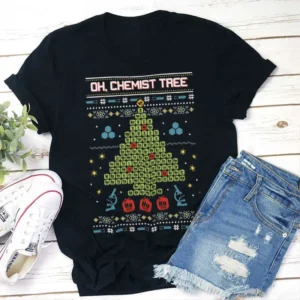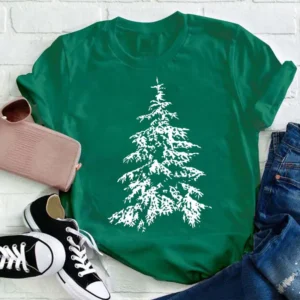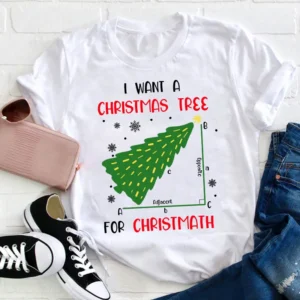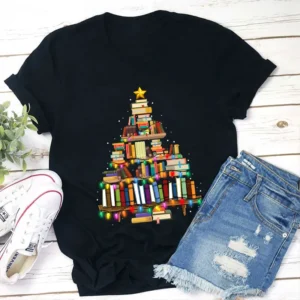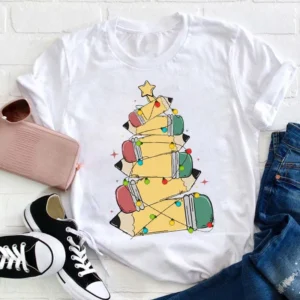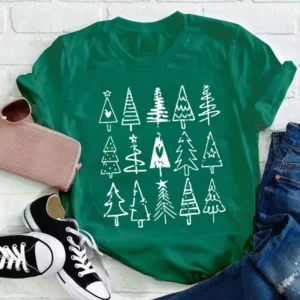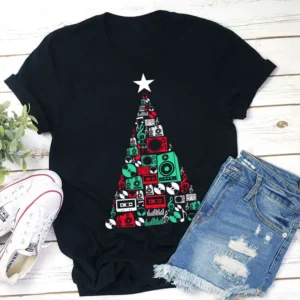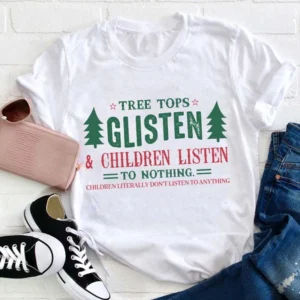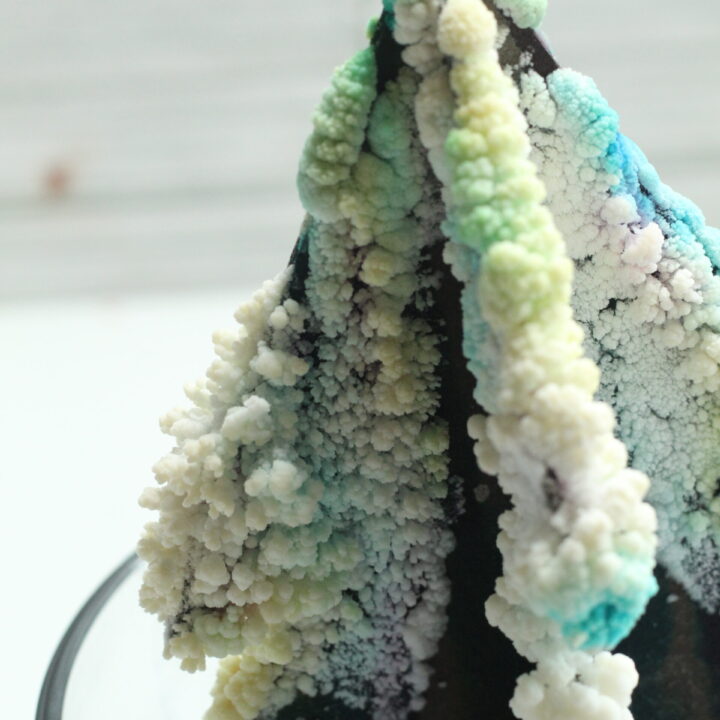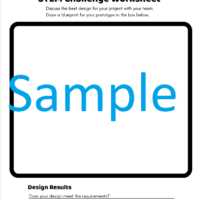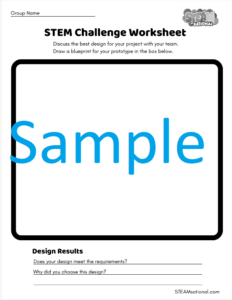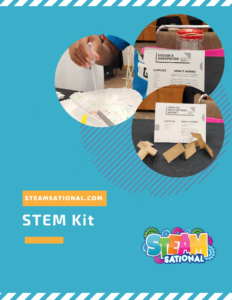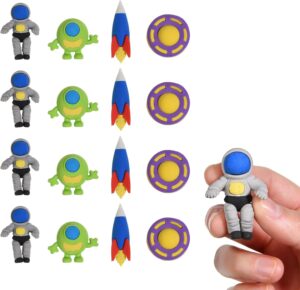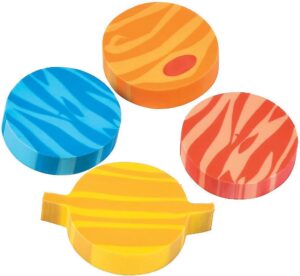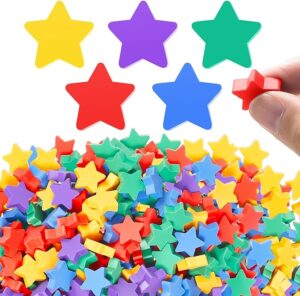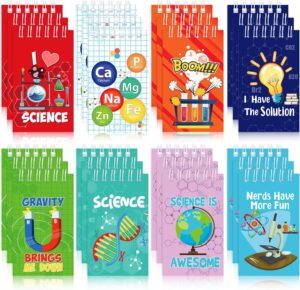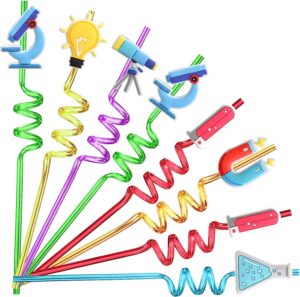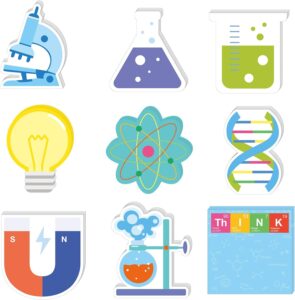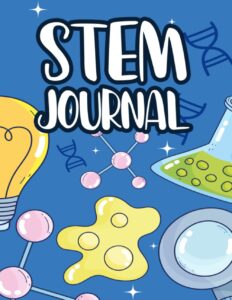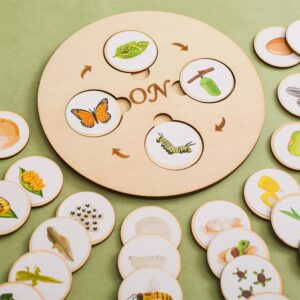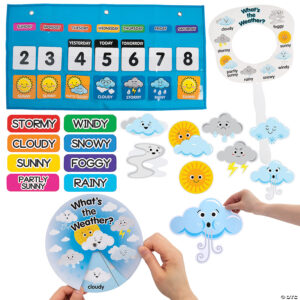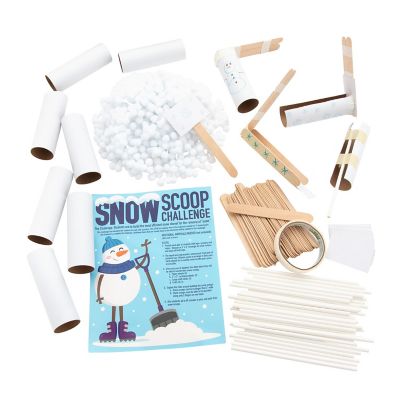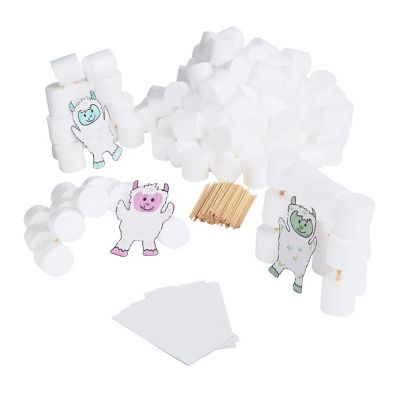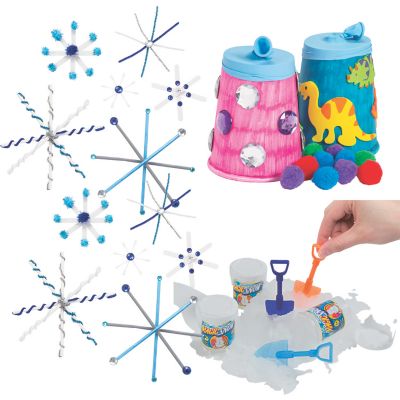Great ready for the ultimate festive STEM fun by making your own magic crystal tree Christmas tree activity! This is a hands-on project that is one of my students’ favorite Christmas tree STEM activities that not only sparks the holiday spirit but also allows students to dive deep into the fundamentals of chemical reactions and crystal growth.
When making bluing and ammonia Christmas trees, students will learn about the principles of supersaturation, crystal formation, variables that can alter how a crystal forms, and the difference between ionic, covalent, and molecular crystals.
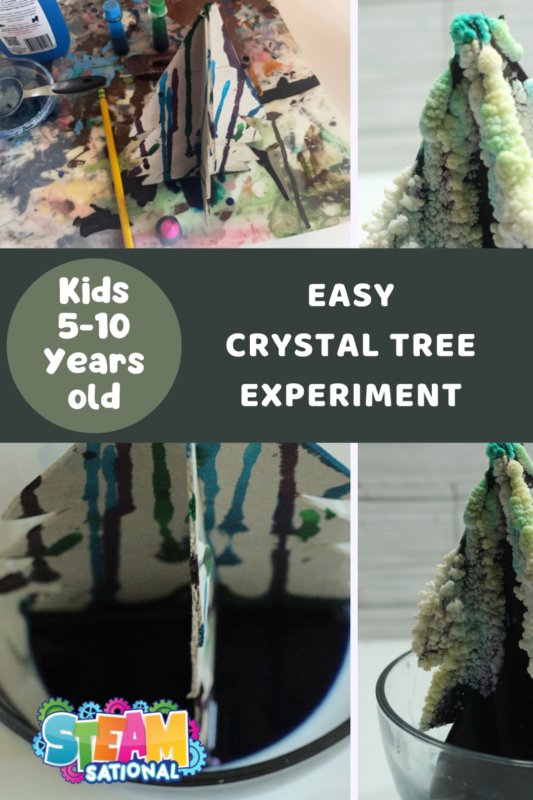
As students saturate the tree cutout with the salt solution, they will observe the transformation as crystals slowly form, sparkling like frost on a winter morning.
This fun holiday twist on the classic bluing and ammonia crystal experiment will add a festive flair to the classroom and make your crystal science lesson a lot more fun for your students.
Crystal Christmas Tree Activity Lesson Plan
Grab the free lesson plan for this bluing and ammonia crystal Christmas tree activity below.
Before accessing the lesson plan, check out our resources for Christmas tree science and STEM activities you can use along with this lesson as well as some fun science facts about crystals!
Table of Contents
Ready to get started? Here is the background info, materials list, and everything else you need to complete this Christmas tree activity in the classroom or at home.
Magic Crystal Tree Science
Here is the science behind this Christmas tree activity to share with your students as you complete this crystal Christmas tree lesson plan.
How does a crystal tree work?
Salt crystals form when students create a supersaturated solution by dissolving salt in hot water. As the water cools, it can hold even less salt particles than in hot water.
The salt particles look for something to stick to, and in this experiment, will stick to the cardboard tree shape.
How many types of crystals are there?
There are four main groups of crystals. Here is a brief overview of each type of crystal.
Ionic Crystals
Ionic crystals have a unique structure consisting of alternating positively-charged cations and negatively-charged anions. These ions can be either single atoms or groups of atoms.
Typically, ionic crystals form when elements from Group 1 or 2 (metals) combine with elements from Group 16 or 17 (nonmetals) or nonmetallic polyatomic ions.
Ionic compounds cannot conduct electricity as solids, but they can conduct electricity when melted or dissolved in water.
Metallic Crystals
Metallic crystals are metal cations surrounded by a sea of mobile valence electrons.
These electrons, often called delocalized electrons, aren’t bound to any specific atom and can move freely throughout the crystal lattice. This unique property makes metals excellent conductors of electricity.
Covalent Crystals
Covalent crystals are made up of atoms occupying lattice points and each atom is covalently bonded to its nearest neighbors.
Examples of network solids include diamond and quartz. Since covalent crystals are made of atoms rather than ions, they cannot conduct electricity in any state.
Molecular Crystals
Molecular crystals are made up of molecules positioned at lattice points, held together by weak intermolecular forces. These forces can be dispersion forces (for nonpolar crystals) or dipole-dipole forces (for polar crystals).
Examples of molecular crystals include ice and some noble gasses in solid states. Molecular crystals do not have free electrons or ions, so they cannot conduct electricity.
Books about Christmas Trees
These science books about evergreen trees will be a good addition to any Christmas tree STEM project!
What are the chemicals that make up crystal trees?
Magic crystal trees are made up of several chemicals, including ammonia,
Normally, when salt crystals grow, they stack up in a neat, orderly way, making a square shape. That’s because salt is an ionic compound, and its crystals are all about positive and negative ions sticking together like building blocks.
When you introduce bluing (which contains small ion particles), it’s like adding a surprise ingredient to the mix. Instead of forming the usual square salt crystals, the salt crystals start to form something more like a “crystal bloom” around the iron particles.
Why do crystals grow on the tips of the tree instead of in the middle?
Capillary action is why crystals grow on the tips of a crystal Christmas tree instead of the middle.
Capillary action, the same process responsible for plants and trees drawing water and nutrients from the soil into their various parts. In the crystal Christmas tree activity, the cardboard tree employs capillary action to draw up the solution until it saturates the entire structure.
Once the solution saturates the cardboard tree, evaporation begins. Ammonia, which evaporates faster than water, accelerates this phase. As the solution evaporates from the tree, it leaves behind crystals on the branches.
What is the difference between bluing crystals and salt crystals?
Bluing crystals and salt crystals can have different shapes primarily due to differences in their chemical composition and the conditions under which they crystallize.
Here are the main reasons for the differences in shape:
Bluing crystals, which are typically composed of compounds like laundry bluing or ferric ferrocyanide, have a different chemical structure compared to salt (sodium chloride).
The arrangement of atoms or ions in the crystal lattice of a substance influences its crystal shape. Since bluing crystals have a different chemical makeup, they will naturally form distinct crystal shapes from salt crystals.
The addition of ammonia also changes the texture of the salt crystals by accelerating the evaporation process. This removes the water from the crystals sooner, helping to form a more “bloom-like” structure rather than the cube shape of table salt crystals.
What do I need to make Christmas Trees out of bluing and salt?
Here is what you need when you make crystal trees using bluing and ammonia.
- Copper(II) sulfate pentahydrate crystals or laundry bluing
- Household ammonia (ammonium hydroxide)
- Table salt (Sodium Chloride)
- Small plastic containers
- Science stirring rods
- Non-corrugated cardboard sheets
- Scissors
- Safety goggles
- Pipettes
- Pencils
- Lab coats (optional, but it will protect clothing from bluing, which can stain)
- Food coloring
- Mixing bowls
Christmas STEM Challenge Cards
If you want even more Christmas STEAM activities, try our FREE Christmas STEM challenge cards with 8 fun Christmas STEM activities for kids that are fun printable Christmas STEM challenges that elementary and middle school students will love!
Crystal Science STEM Extensions
Here are some additional STEM extensions you can use along side your Christmas tree activity making holiday trees from crystals!
- Investigate how varying temperatures affect the growth rate and morphology of bluing and ammonia salt crystals. Collect data on crystal growth rates at different temperatures and analyze the kinetic factors involved in crystal formation.
- Utilize microscopy techniques such as scanning electron microscopy (SEM) or optical microscopy to examine the microscopic structure and surface morphology of the crystals. This can help students explore the detailed crystallography and the impact of additives on crystal growth.
- Use mathematical modeling and computer simulations to predict and visualize crystal growth patterns under various conditions. Students can write code to simulate crystal growth processes and compare their results with experimental data.
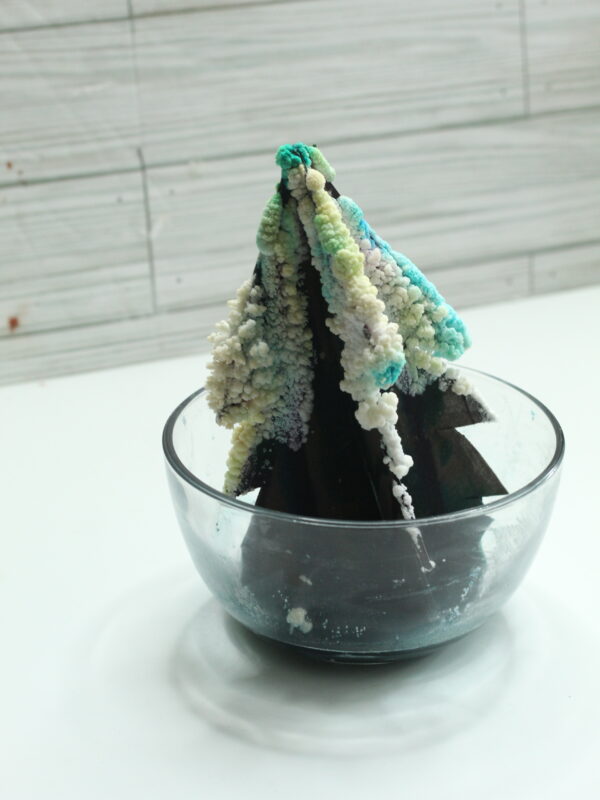
These STEM extension ideas encourage students to deepen their understanding of crystal growth, explore advanced analytical techniques, apply mathematical and computational skills, and consider the broader scientific and environmental context of the experiment.
Science Facts about Crystals
When students create crystal Christmas trees using bluing (usually referred to as “Mrs. Stewart’s Bluing”) and ammonia, they can learn several science concepts, including:
Supersaturation
Supersaturation occurs when a solution holds more solute (in this case, bluing and ammonia) than it would typically dissolve at a given temperature.
As the solution cools and evaporates, crystals form because it can no longer hold the excess solute.
Solubility
Solubility is the ability of a substance (bluing and ammonia in this case) to dissolve in a solvent (water). They can observe how temperature affects the solubility of these substances and how changes in solubility influence crystal growth.
Chemical Changes
While not technically a chemical reaction, the mixing of bluing and ammonia in water can be discussed in terms of chemical changes and the interactions between molecules.
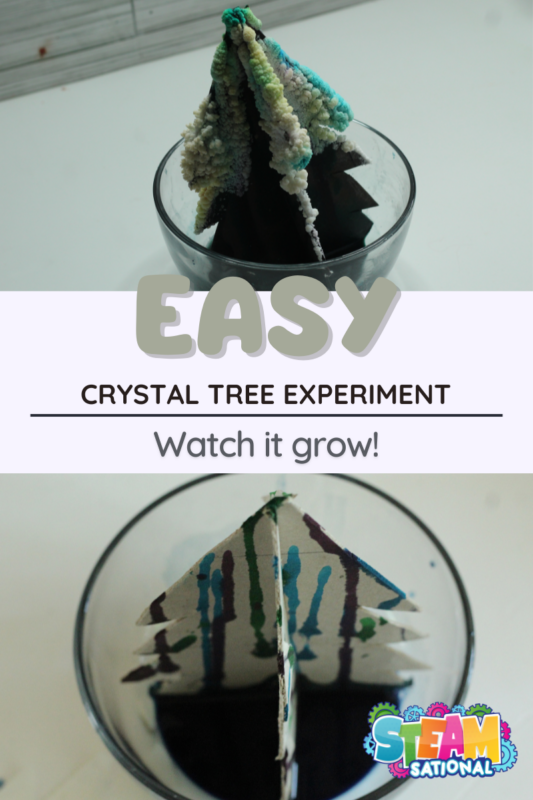
Students can understand that these substances interact to form a solution and subsequently crystals.
Fun Facts about Crystals
Here are some fun facts about crystals to share with your students while they make their own magic crystal tree!
Crystals are not just beautiful to look at; they are also significant in science and technology.
Their orderly, repeating patterns at the atomic or molecular level give them unique properties vital in various applications.
For example, the silicon crystals used in electronics help power the devices we use daily, from smartphones to computers.
The crystalline structure of diamonds makes them the most complex natural material, and this property allows them to be used in cutting and grinding tools.
In biology, scientists use crystallography to determine the 3D structure of proteins, which is essential for understanding their function and developing new medicine.
Remind your students that the next time they take a picture with a cell phone, use their computer, or see a machine at the doctor, remember that none of those objects could exist without crystals!
Teacher Christmas Tree Shirts
Here are some adorable Christmas tree shirts for teachers!
Chemist Tree Christmas Tree Teacher Shirt
Evergreen Christmas Tree Teacher Shirt
Math Christmas Tree Teacher Shirt
Books Christmas Tree Teacher Shirt
Pencil Christmas Tree Teacher Shirt
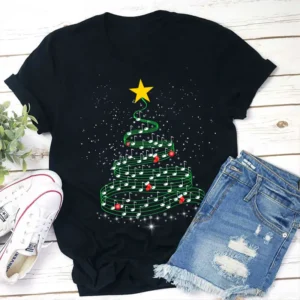
Forest Christmas Tree Teacher Shirt
Music Box Christmas Tree Teacher Shirt
Children Listen Christmas Tree Teacher Shirt
Music Note Christmas Tree Teacher Shirt
How to Make Crystal Christmas Trees
Follow along with these directions to learn how to grow a crystal in a tree shape and grow your own magic crystal Christmas trees following the directions below!
And if you want to get a complete lesson plan for this activity, scroll to the bottom of the post to grab the printable crystal Christmas tree activity lesson plan!
Step by Step Directions to Make a Magic Crystal Tree
Here is how to make christmas trees from salt, laundry bluing, and ammonia. Create your own salt crystal Christmas tree as a decoration for the season!
Trace a tree design on your non-corrugated cardboard.
Draw a tree design onto one half of your cardboard, you want a design that is wider at the bottom than the top so that it isn’t top heavy and can support the weight without tipping over.
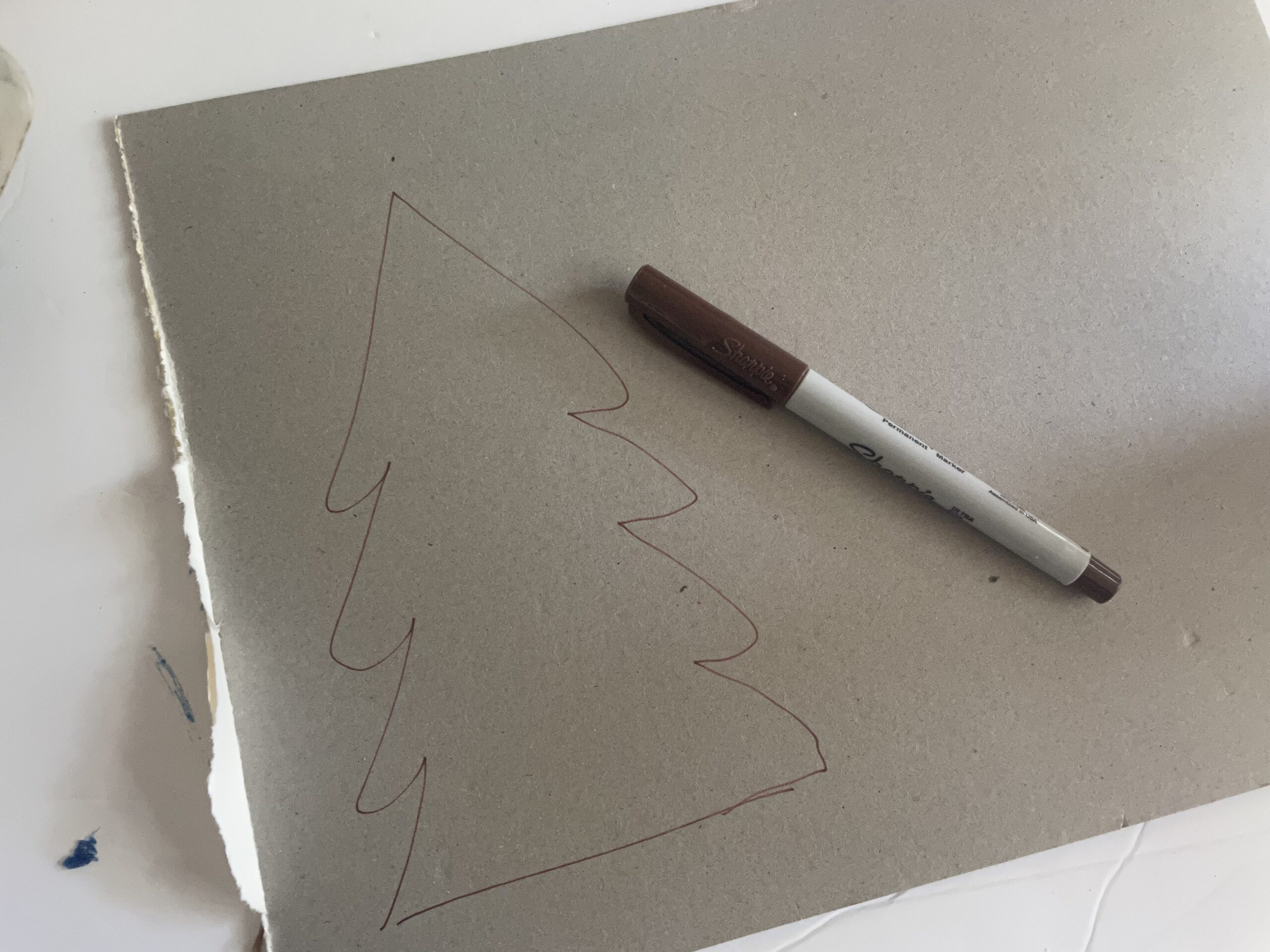
Fold your cardboard in half and cut it out so that you are cutting two of the exact same tree.
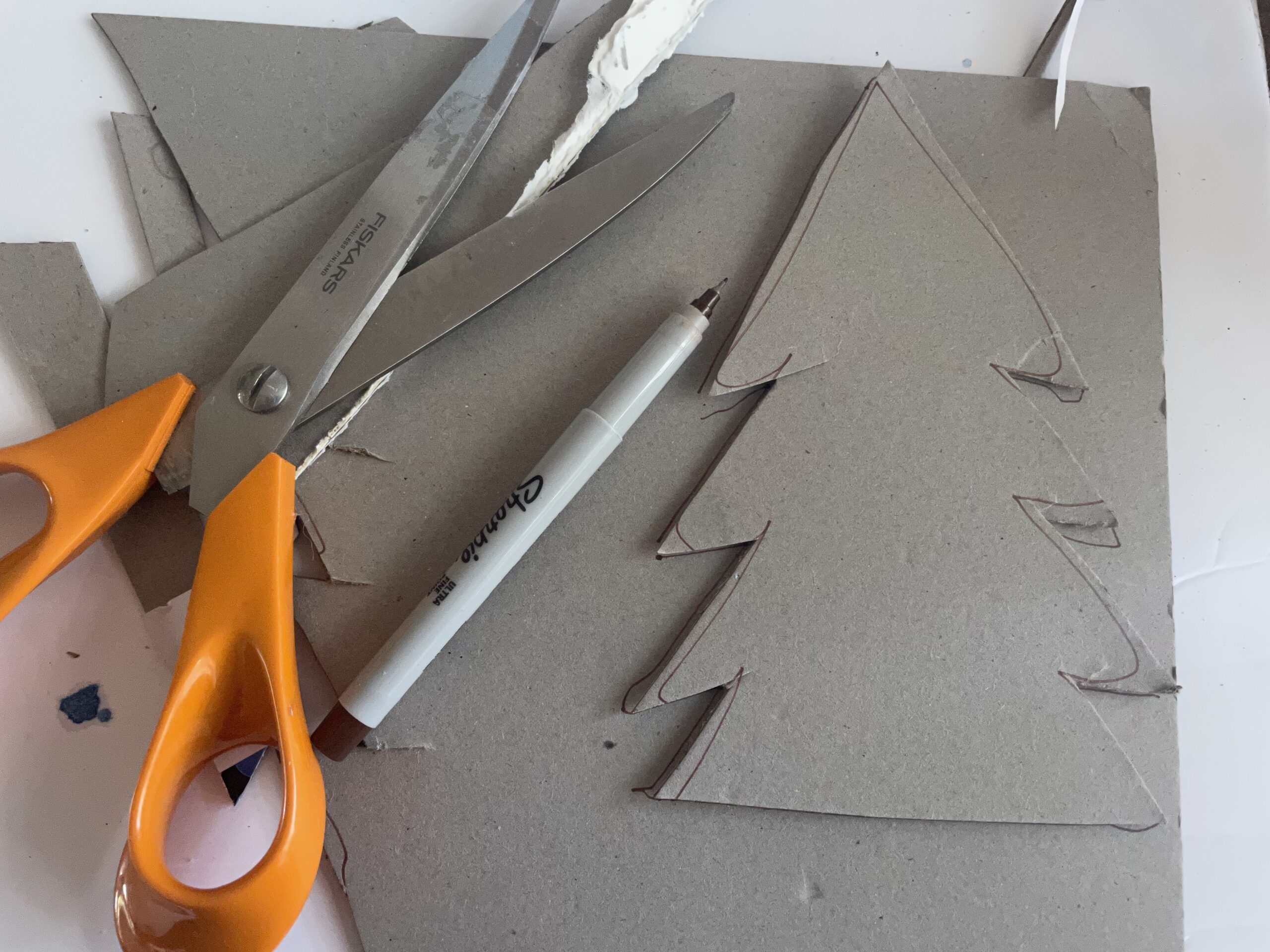
Cut one tree ¾ of the way up from the bottom. Cut the other one a little more than ¼ of the way down from the top.
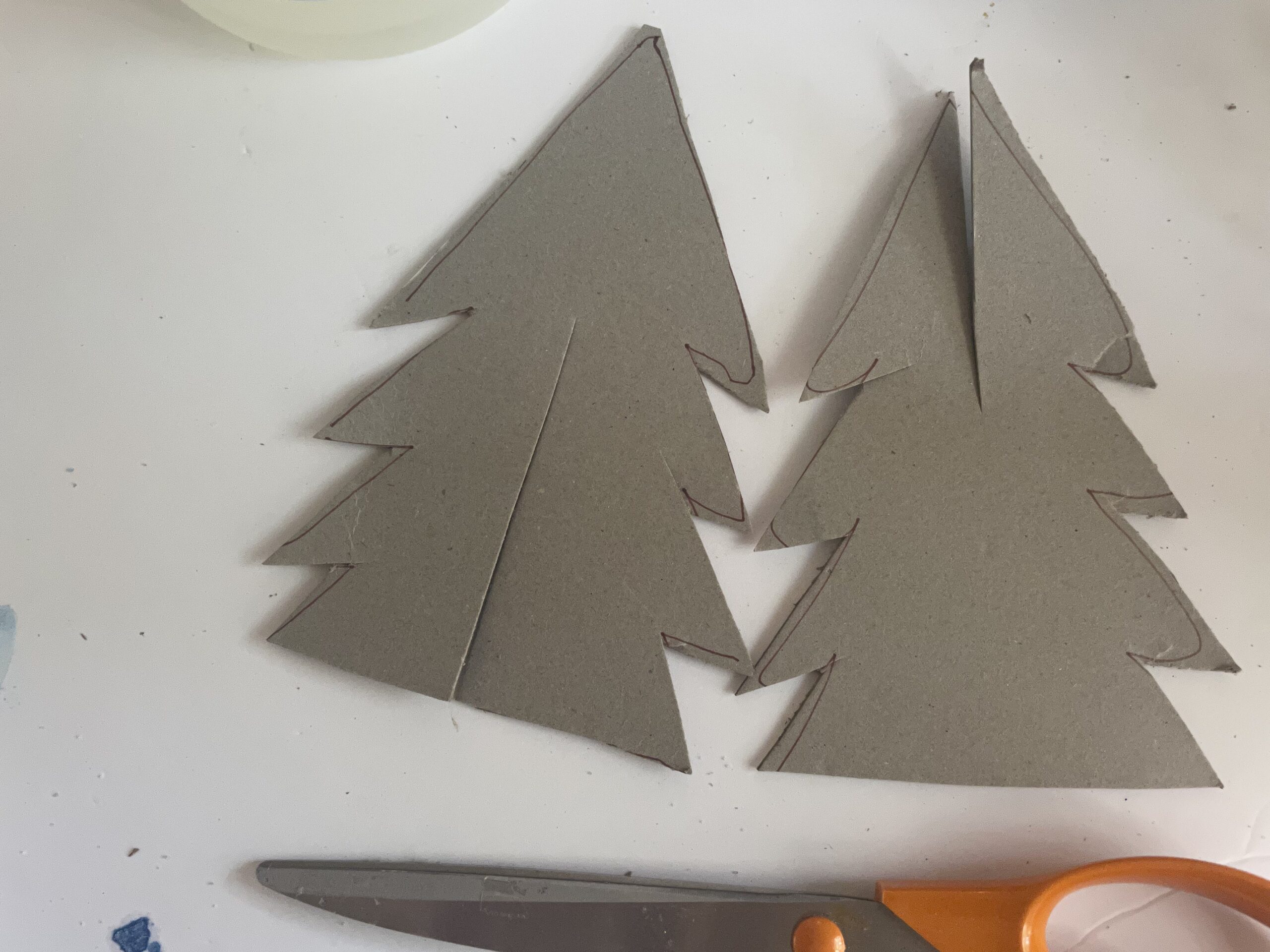
Slide them together. Be sure that your tree base fits in the container you chose.
Add food coloring to your tree, be generous with your drops, these will color your crystals.
Now, place the tree inside the container.
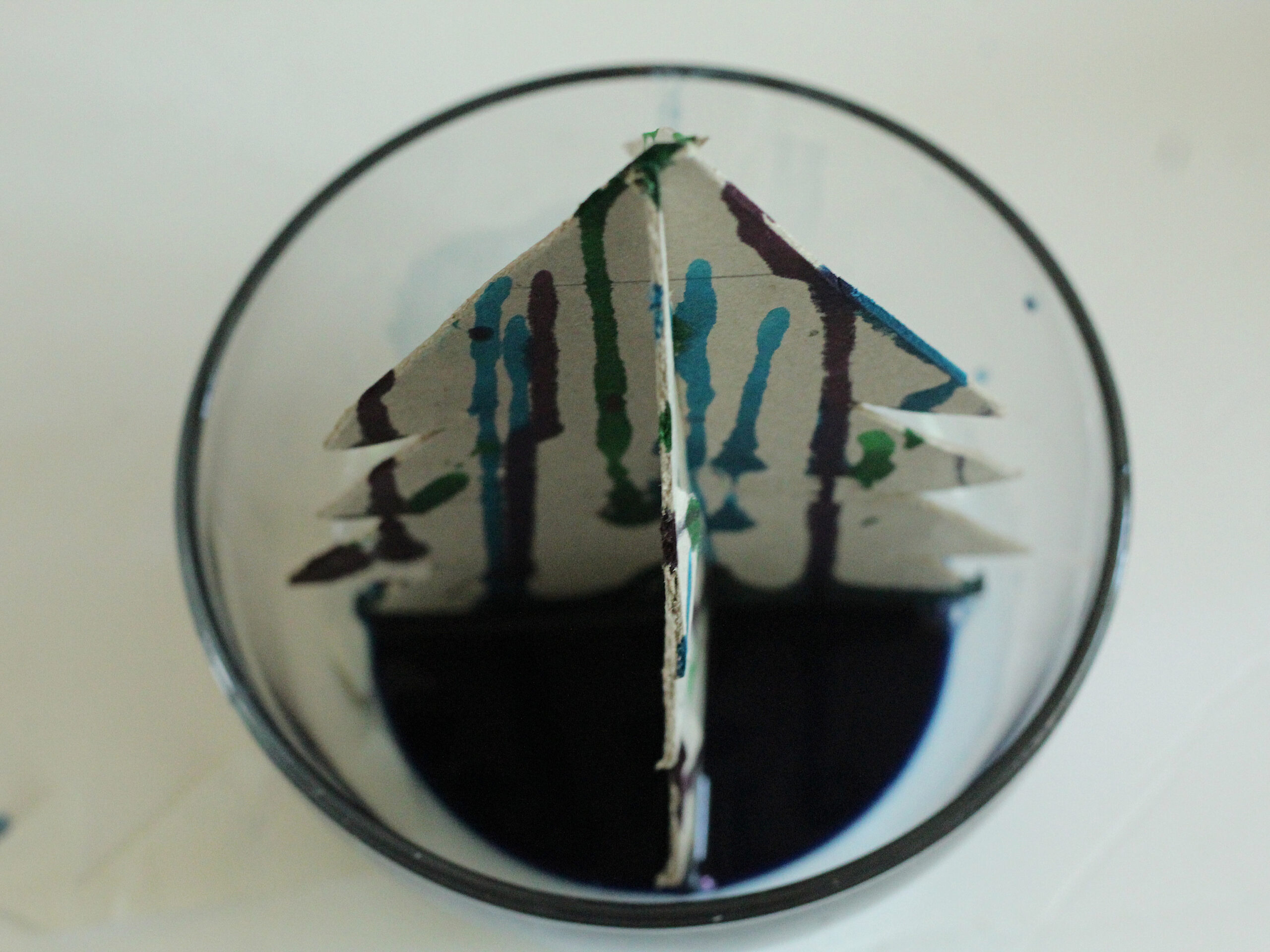
Combine bluing, ammonia, salt, and water in a mixing bowl, and stir well to combine thoroughly.
Pour the liquid carefully into the base of the tree container. Place the christmas trees in a place where it will not be disturbed.
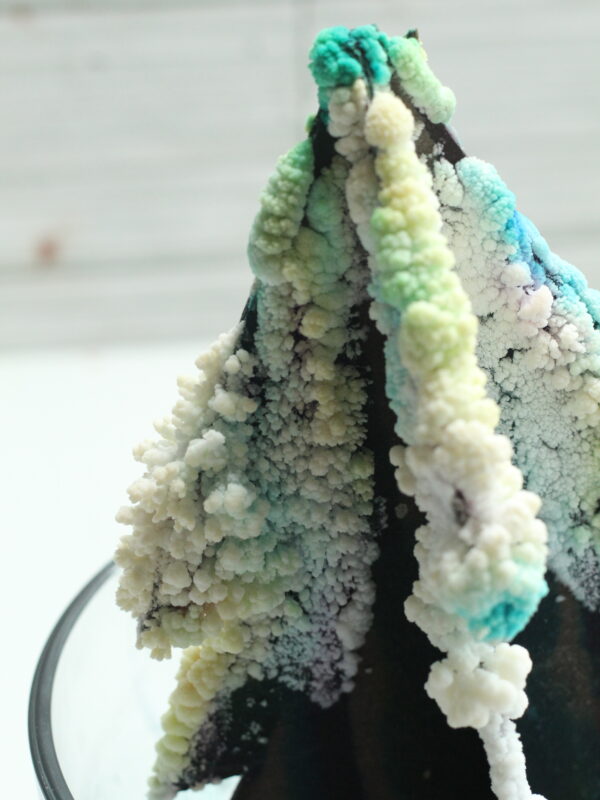
Crystals may take up to 2-3 days to form.
More Christmas Science Activities
After doing this tree science experiment, try some of these other holiday-themed STEM activities for elementary and middle school!
- 25 of the Most Festive Christmas Science Experiments for Kids
- How to Make a Christmas Snow Globe Science Experiment
- 14 STEM Christmas Gifts that Kids Will Love!
- Build a Chimney for Santa
Hands-On STEM Resources about Trees
Here are some hands-on STEM resources about trees that can be used alongside this Christmas tree STEM activity.
Crystal Christmas Tree Science Experiment Lesson Plan
Show kids the magic of crystal formation with this Christmas tree activity.
Grab the free printable crystal tree lesson plan below to transform this simple science demonstration into a complete Christmas tree STEM activity.
Christmas STEM Challenge Cards
If you want even more Christmas STEAM activities, try our FREE Christmas STEM challenge cards with 8 fun Christmas STEM activities for kids that are fun printable Christmas STEM challenges that elementary and middle school students will love!

